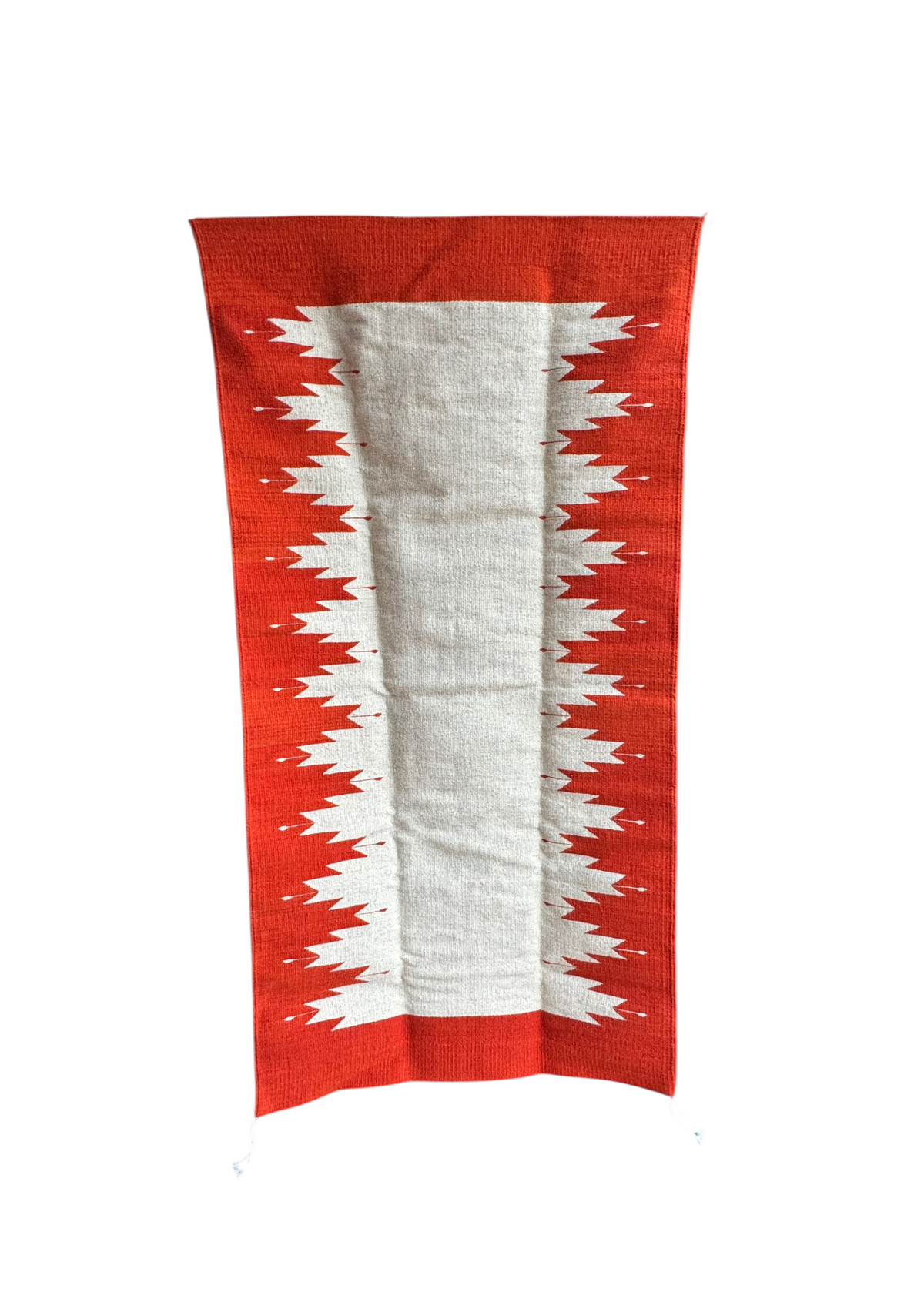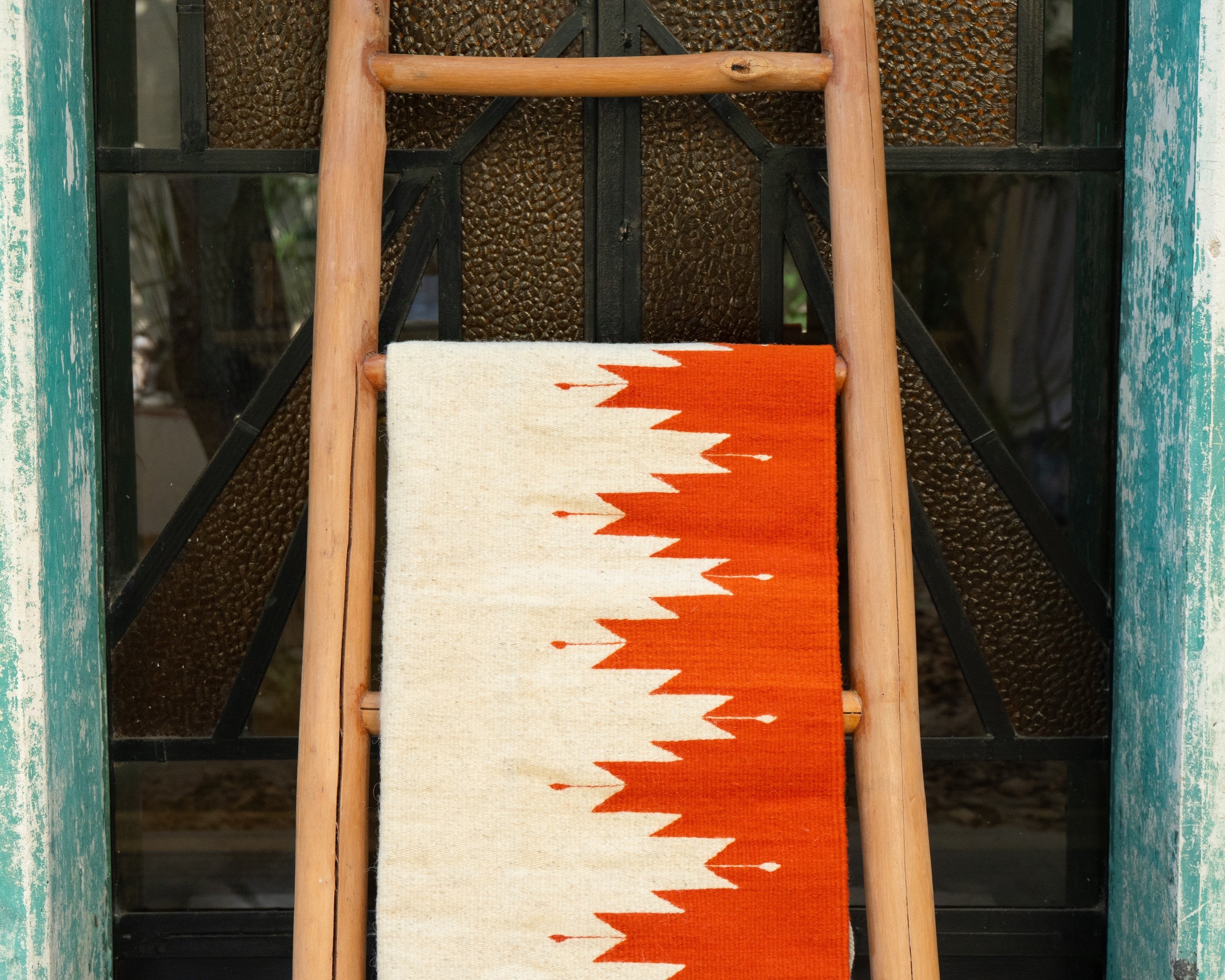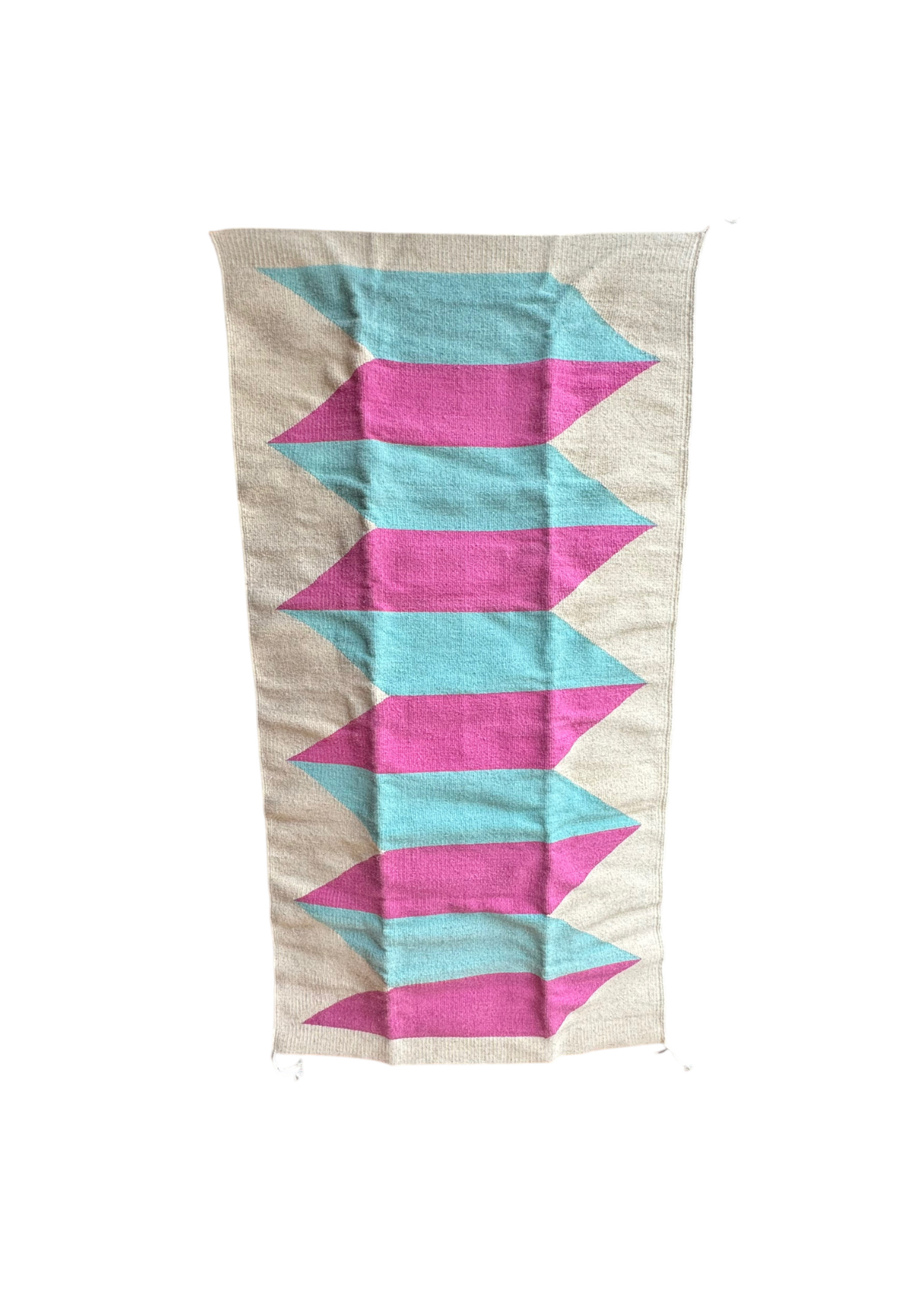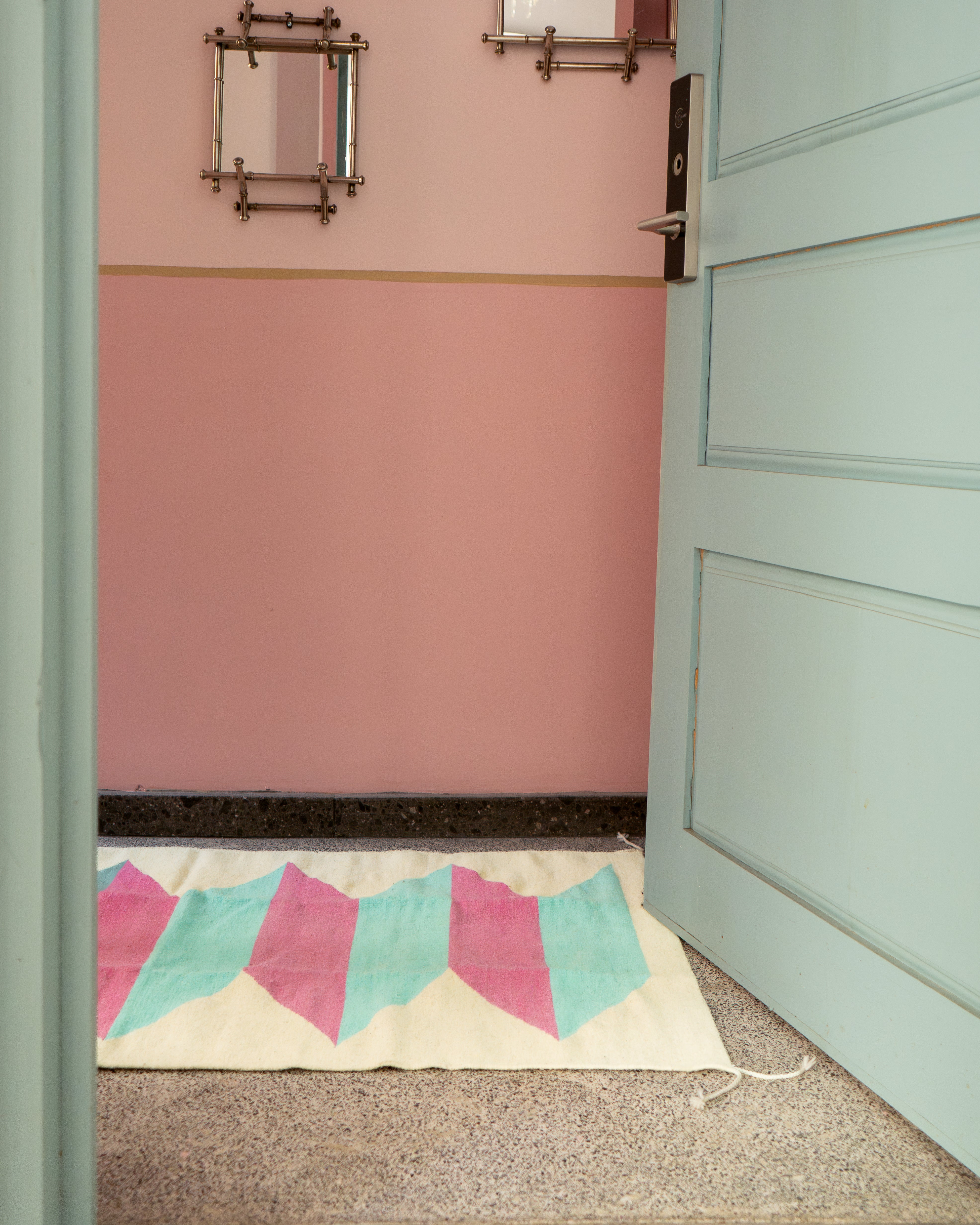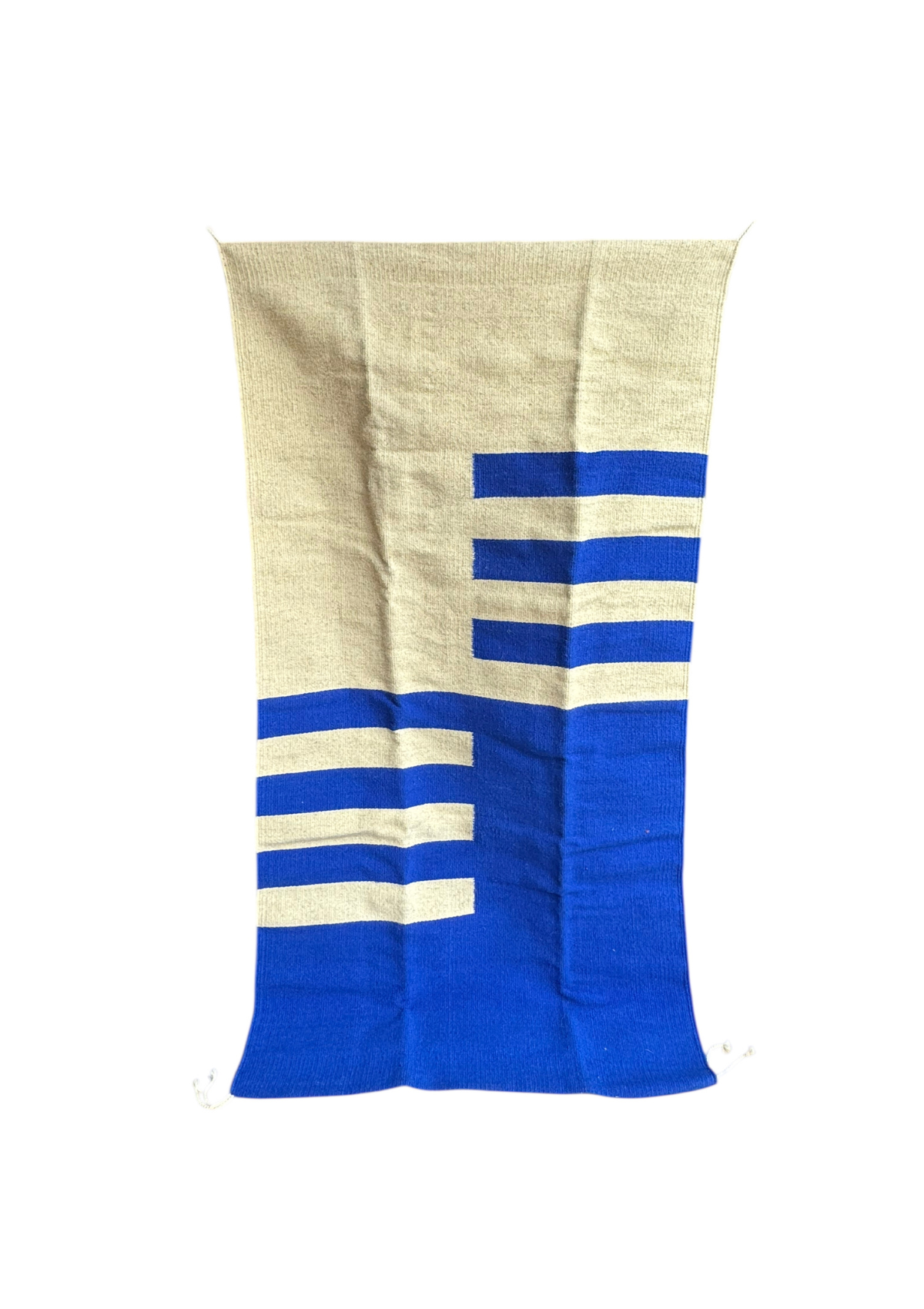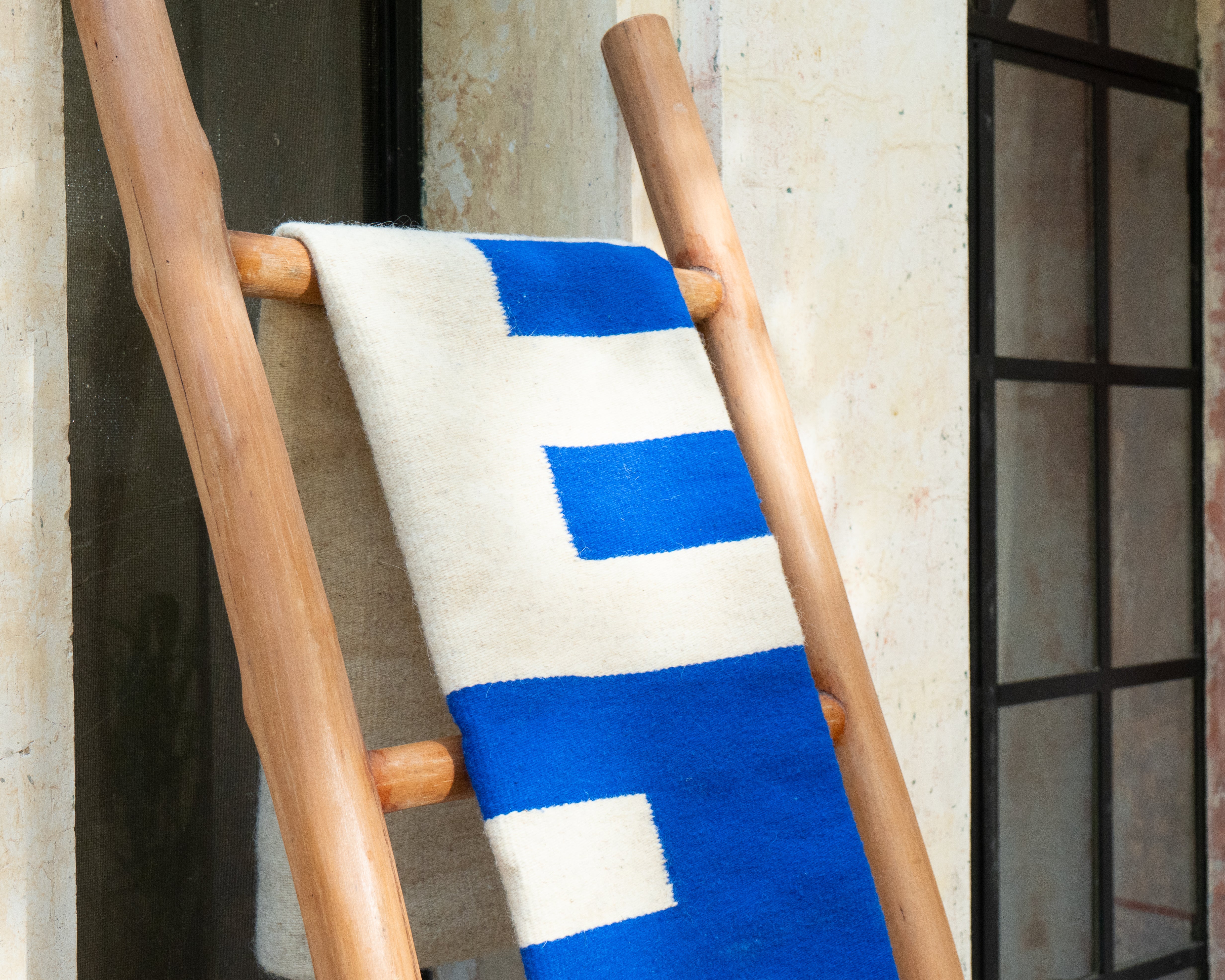Eduardo Gutierrez
In Teotitlán del Valle, the village known as the heart of Zapotec weaving, we met Eduardo Gutierrez and his wife. Their home is a testament to their craft, every wall adorned with hand-woven rugs, each one telling its own story through ancient patterns and natural dyes. When Eduardo invited us into their workshop, we had no idea we were about to witness a process that would completely change how we understand what goes into creating something truly beautiful.
About Eduardo Gutierrez's workshop
Eduardo and his wife don't just weave rugs – they create them entirely from scratch. From sheep to finished textile, every single step happens in their workshop using techniques passed down through generations. We watched as they demonstrated the natural dyeing process: pomegranate seeds mixed with limestone producing vibrant greens, while the peels create soft yellows. The cochinilla del nopal (cochineal insect) creates deep reds, but add lime as a mordant and it transforms into orange; mix it with powdered limestone and it becomes purple. The colors are rich and entirely natural.
Then came the real revelation: the weaving process itself. Eduardo's wife has been doing this since she was eight years old – nearly thirty years now – and watching her work is mesmerizing. She makes it look effortless, but this is a skill honed over decades of daily practice.
First, the wool must be carded to prepare it for spinning. The number of times it's carded (around 40 passes) determines the quality of the final thread.
Then comes the spinning. For just one bundle of thread, she spends seven to eight hours carding and spinning. For the smaller rugs we carry in our shop, they need 12 to 14 bundles. Let that sink in.
After dyeing, the weaving begins. This isn't simple handwork, it's a full-body craft. With foot pedals below, they move the base threads while weaving space by space, thread by thread. For intricate designs, they count each thread of the base to create the pattern accurately. A single rug, even on the smaller side, can easily take three weeks to complete.
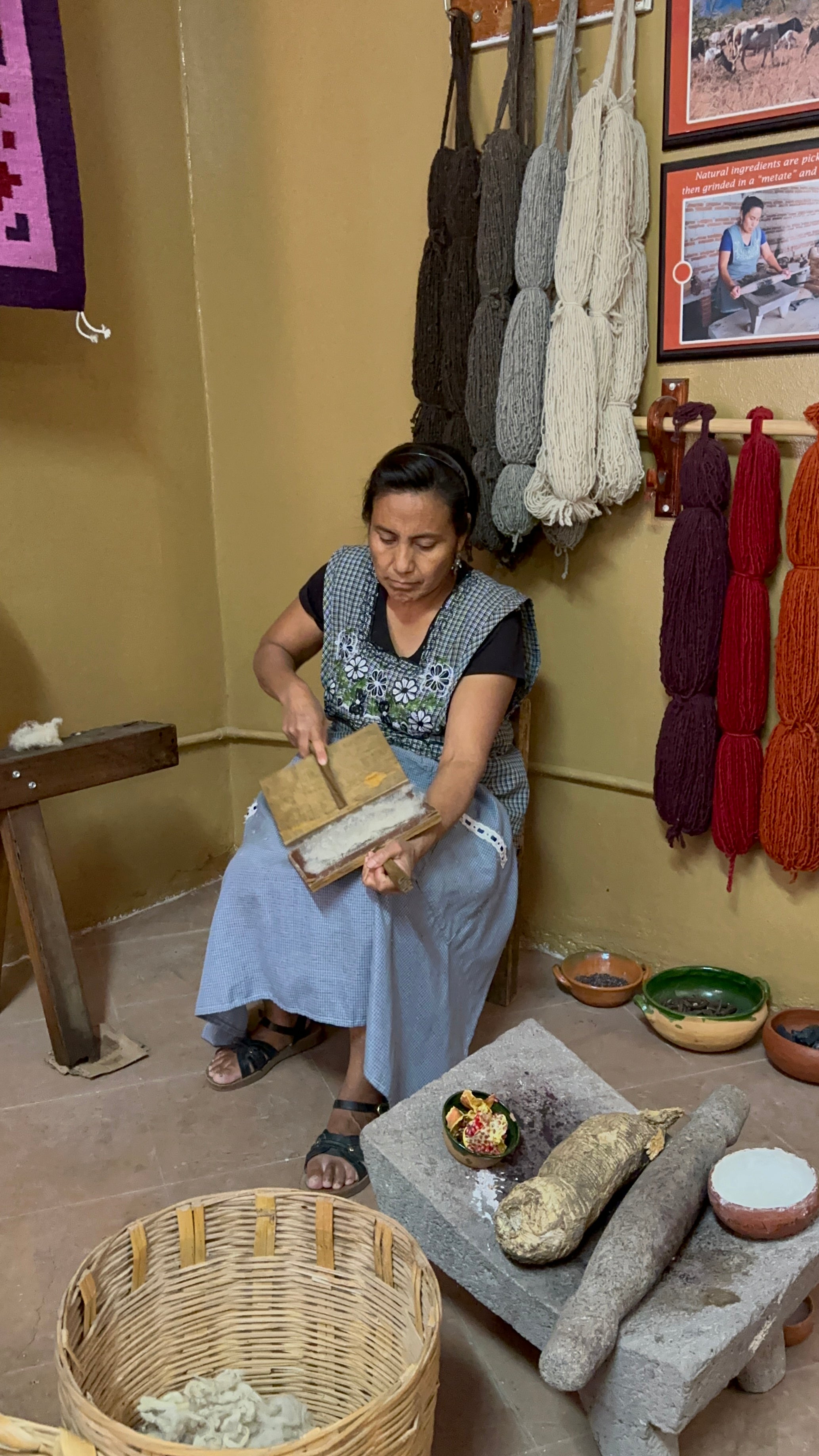
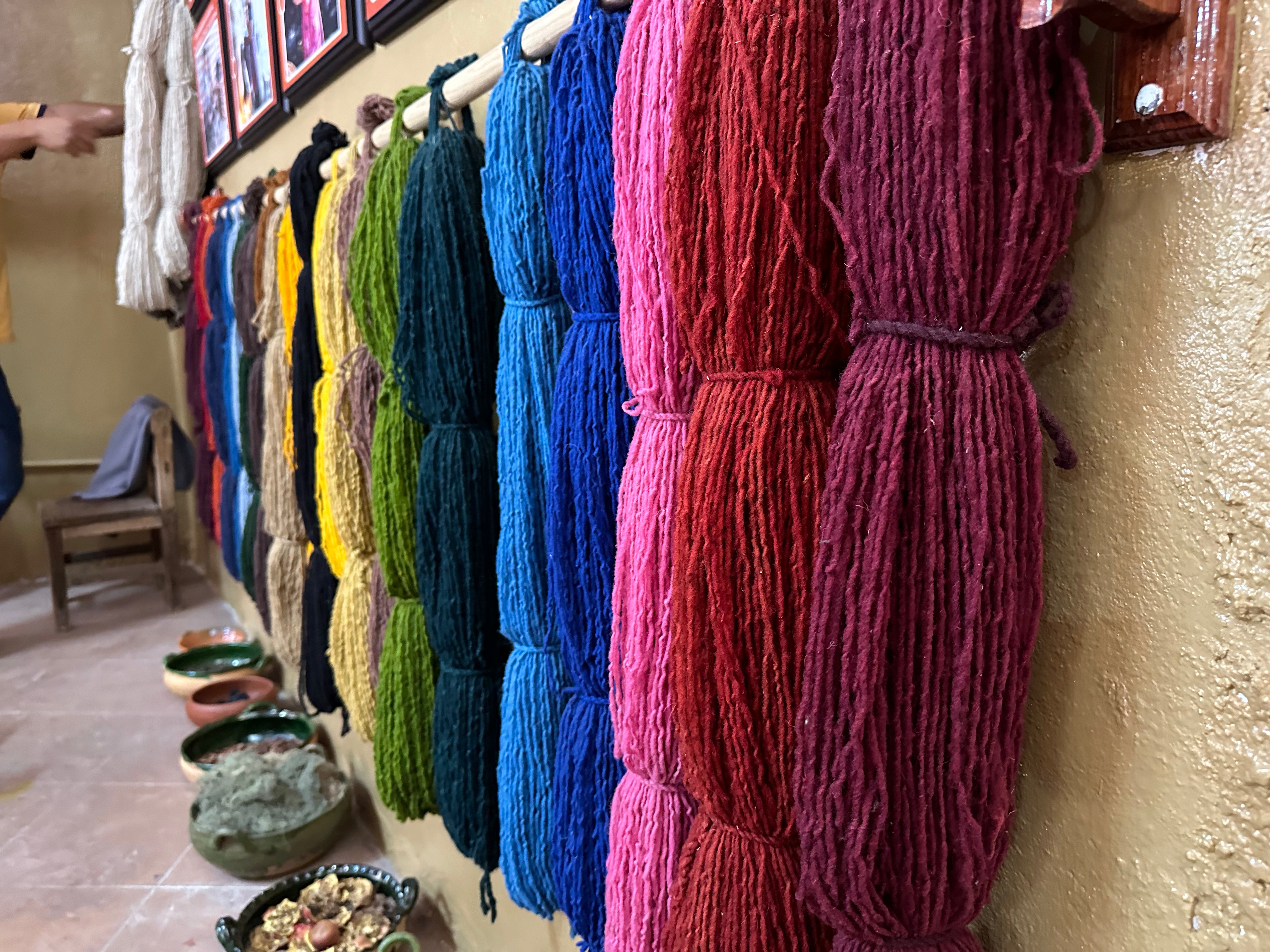
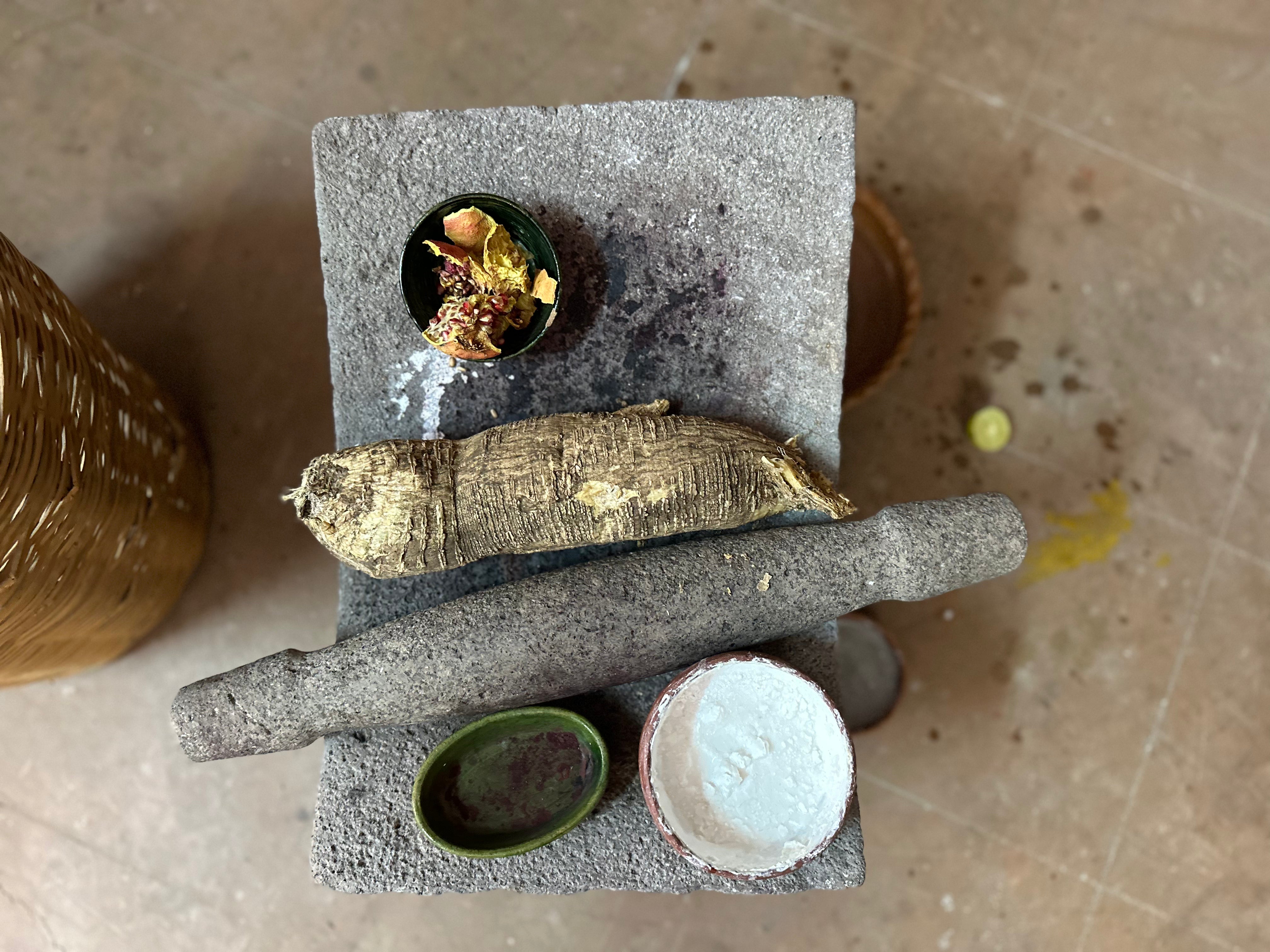
The history behind the patterns
The designs woven into these rugs aren't decorative choices, they're symbols with specific meanings, some thousands of years old. Visit the ancient Zapotec sites of Mitla or Monte Albán and you'll see the same geometric patterns carved into stone that Eduardo weaves today.
The diamond pattern represents the universe and the four cardinal directions. Stepped patterns mirror the mountains surrounding the valley. Zigzags symbolize lightning and water, essential to agricultural life. Zapotec philosophy centers on duality and balance – concepts like male and female, light and dark, life and death – which appear as mirrored or paired motifs in the textiles.
Each weaving family in Teotitlán has developed their own variations of these core symbols over generations, adding personal interpretations while maintaining the essential meaning. This is why we can't pre-sell the rugs already made in Eduardo's workshop, these are protected family designs and shouldn't be copied. What we offer here are designs that are more widespread within the community, equally rooted in tradition and meaning.
Custom orders
If you're looking for a different size or a more intricate design, we can send you options from Eduardo's workshop. These aren't set in stone, you can choose your own colors, let Eduardo and his wife select them based on traditional symbolism, or mix and match yourself. Anything is possible. Just get in touch with us and we'll make it happen.
This is what it means to create something real. Not factory-made, not mass-product, but crafted with skill, time, intention, and generations of knowledge woven into every thread.
Featured collection
Eduardo Gutierrez


